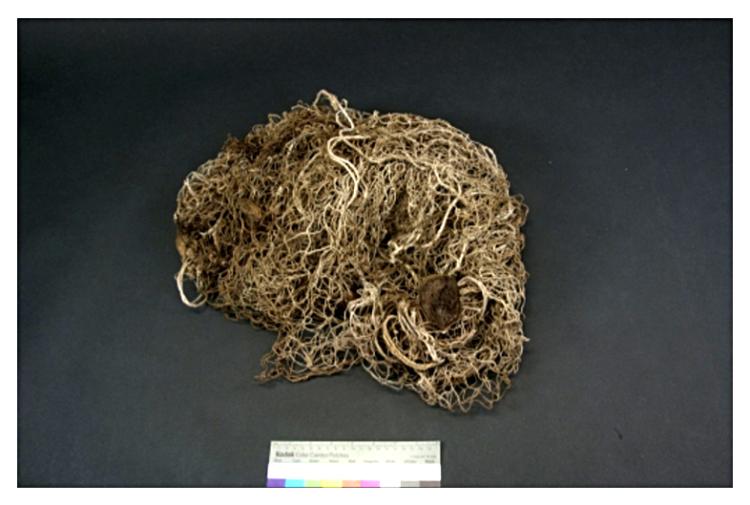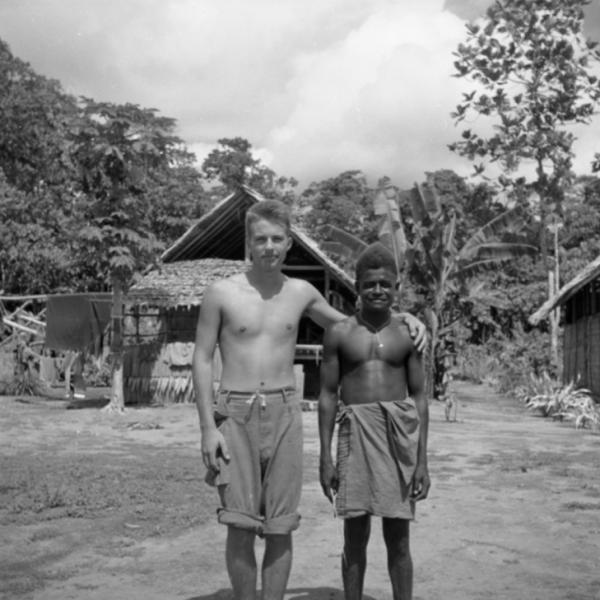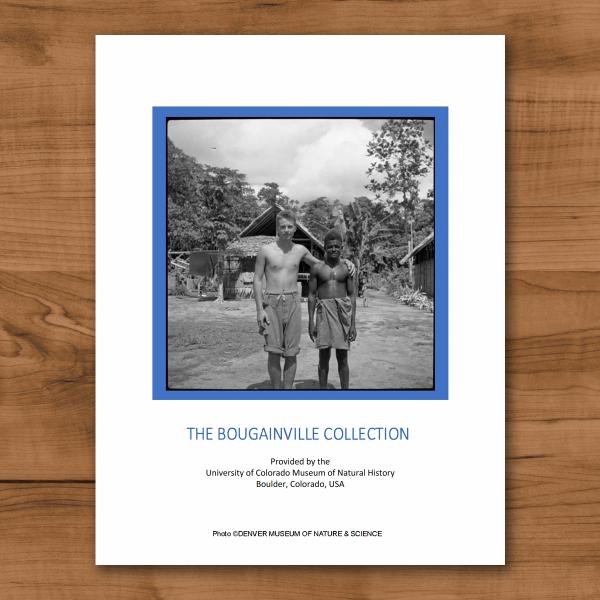The CU Museum is closed we will be opening early in the spring semester.
During this time, collection visits will be available by appointment and other special access requests will be considered on a case-by-case basis.
Please email cumuseum@colorado.edu for more information.
Collaboration and Collection Opportunities: Budding Relations
Above: Jeffrey Noro (third from right) presented the Bougainville Collection book to the Curator of War History at the Papua New Guinea National Museum and Art Gallery and other museum staff. The museum director, Dr. Andrew Moutu, is second from left. June 2019.
“We are delighted to be able to collaborate with you on this museum project because we feel that historical information as this, is critical for Bougainville, both as tangible and intangible…to create systems and processes for digital and print repatriation of collections back to Bougainville. There are many collections from Bougainville that are stored in museums around the globe, and thankfully have been preserved. Sadly, we have lost many of these…[this] is a great way to regain some of these lost knowledges.”
— Dr. Jeffrey Noro, Executive Director of The Kainake Project
These materials “are vital for the communities and people of Bougainville to rediscover and trackback on their history. It is unfortunate for us that nothing as such you have in your museum can be found today on Bougainville. That is why we are so privileged to connect and collaborate on this project.”
— Mr. Junior Novera, Program Leader for Kainake
The relationships between Bougainvilleans and the University of Colorado Museum of Natural History began with Conrad Bud Johnson’s collecting. These relationships were unknown for years until they were rediscovered in the collection thanks to a CU student's interest in researching collections from the Pacific for an anthropology class. Building on the realization of the wealth of materials and documentation in the museum, CU faculty and students put together a book about the photos, objects, and documents in the collection and sent it to Dr. Jeffrey Noro, Director of Policy at the Papua New Guinea Science and Technology Secretariat, and Junior Novera, an ecology PhD candidate in Queensland, Australia. Due to the long history of colonial presence and the Bougainville Civil War (1988-1998), a lot the island’s material culture was destroyed during wartime or is housed in museums around the world. The hope of the museum and community partners is that the book, this exhibition, and related conversations will turn the budding partnerships into long-lasting, sustainable relationships.
- Sincerely, Bud Johnson:
The Bougainville Island Collection at CU - Collecting Encounters
- Collaboration and Collection Opportunities:
Budding Relations - Environmental Conservation and Cultural Heritage:
The Kainake Project - Colonial Powers of Bougainville
- A Window into the Bougainville Collection: Sing-Sings
- Bud Johnson's Bougainville Photos: Snapshots
Social and cultural dynamics in Bougainville: historic and current perspectives
Dr. Jeffrey Noro, Founder and Director of the Kainake Project, discusses the historic and cultural perspectives of the island of Bougainville.
Johnson with Puka, Kumpani Village, Bougainville Island (1949)
"Puka, the village chief, photo right of Conrad J. Johnson, photo left.”
— Conrad 'Bud' Johnson
The Bougainville Collection Primary Source Book
This is an example of the book sent to Dr. Jeffrey Noro and Junior Novera. The book includes images and copies of all the objects Johnson had collected, all of the photos he took, and all of the documented communication between him and the University of Colorado Museum of Natural History.
From the CU Collection

Net. Pre A.D. 1949; Materials: Fiber, plant. (07414)
"To me, this net is a metaphor for the relationships that have been, and are being, woven between Bougainville and Boulder since Bud's time and into the future." — Manuel Ferreira



